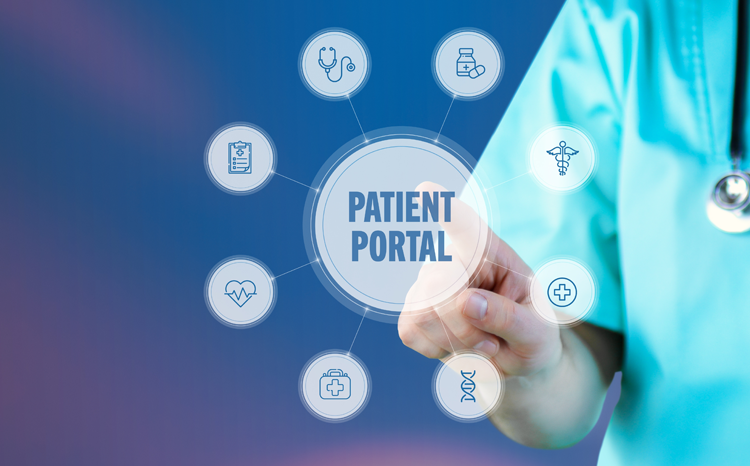How to unlock the potential of patient portals
- 9 October 2024

Digital portals promise huge benefits for patients and providers – but using them is unnecessarily complicated, writes the PRSB’s Oliver Lake
As the NHS faces unprecedented demand, prevention and self-management will be critical approaches for reducing waiting lists and easing workforce pressures. In 2018, a Health Foundation study of 9,000 people with long-term conditions found that those confident in managing their own care made 18% fewer GP visits and 38% fewer emergency department attendances.
With the recent independent investigation of the NHS in England by Lord Darzi advocating for a “tilt towards technology”, digital tools will be important enablers for helping people to manage their own care. Digital health apps and portals can enable people to view their medical records, schedule appointments, monitor chronic conditions, and even receive personalised health guidance – without needing to visit a healthcare provider. The Covid-19 pandemic accelerated the adoption of such technologies.
But despite their convenience and potential to streamline healthcare delivery, PRSB’s recent project with the Patient Information Forum, supported by the Health Foundation, has concluded that the digital health portals landscape is often confusing and fragmented, hindering their widespread adoption and impact.
Benefits for patients and providers
Digital health portals have the potential to support better outcomes for people and support their self-management. Research shows that when people are actively involved in their own care, outcomes can improve and satisfaction with services rises. Tailored platforms, such as the NHS App, can help people feel more informed and in control of their health in ways that were unimaginable just a few years ago.
From a health and care provider’s perspective, digital portals have the potential to free up valuable time and resources by reducing the need for face-to-face appointments for routine tasks. Additionally, when portals are integrated into care pathways, they can facilitate improved or more timely communication between patients and providers.
Fragmented ecosystem
Despite the promise of digital health portals, several barriers remain. One major issue is the fragmentation of the digital health ecosystem. With a plethora of portals, and many unable to ‘speak to each other’, offering different functionalities and requiring separate logins, navigating the landscape becomes unnecessarily complicated. Our research indicated that both patients and clinicians often struggle to determine which portal to use and trust for specific tasks, reducing the overall impact.
Another issue to tackle is digital inclusion. Many individuals – particularly older adults, low-income groups, and non-English speakers – lack the digital literacy or resources needed to engage with these platforms effectively. And often portals are not designed with inclusion in mind. By focusing on digital inclusion, we can reduce healthcare inequalities by enabling those with the greatest needs to access the full benefits of digital health.
This landscape also generates missed opportunities to improve patient safety. People with complex health needs can suffer significant harm when crucial information about their conditions, preferences, or care plans is not understood or communicated effectively. PRSB standards (such as ‘About Me’) aim to address this by enabling individuals to share essential personal information with health and care providers. If standards were routinely integrated into health portals and apps, they would not only reduce medical errors but also lead to more personalised, patient-centered care – improving outcomes for those most at risk.
It is also important that people are signposted to trustworthy portals. Using content standards like PIF TICK helps users identify trusted, evidence-based sources of information and avoid harmful misinformation.
Strategy for improvement
To make digital health portals more user-friendly for healthcare providers and the public, our research recommends the following:
- A unified strategy and framework to connect and integrate different platforms, allowing health and care information to flow seamlessly between services. Standardising portal functionalities will also help individuals and providers understand how to use these tools and integrate them into care pathways effectively.
- Raise awareness and improve education for both patients and clinicians. Many people are unaware of the digital portals available, while some healthcare professionals may lack the confidence to recommend them. Targeted awareness campaigns and better education could build trust in digital solutions, encouraging wider adoption. Providing digital literacy programs or support services will help bridge the gap for those less familiar with technology, ensuring that no one is left behind in the digital health revolution.
- Ensure accessibility for all by developing user-friendly tools available in multiple languages with inclusivity a key design principle.
More connected, intuitive, and accessible digital portals have the potential to help with system pressures and enable individuals to take a more active and empowered role in managing their health, leading to safer, more personalised care for all.







1 Comments
Find out more about our project with the Patient Information Forum on our website: https://theprsb.org/patientportalsreport/.
Get in touch to discuss how we can work together on similar projects – contact us at info@theprsb.org.
Comments are closed.